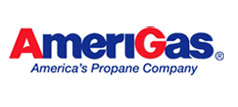El Niño
El Niño actually means The Little Boy, or Christ Child in Spanish. El Niño was originally recognized by fishermen off the coast of South America in the 1600s, with the appearance, and subsequent reoccurrence, of unusually warm water in the Pacific Ocean. The name was chosen based on the time of year (around the December Christmas date) during which these warm water events tended to occur.
The term El Niño refers to the large-scale ocean-atmosphere climate interaction linked to a periodic warming in sea water surface temperatures across the central and east-central Equatorial Pacific.
Typical El Niño effects are likely to develop over North America during the following winter months. Those include warmer-than-average temperatures over western and central Canada, and over the western and northern United States. Wetter-than-average conditions are likely over portions of the U.S. Gulf Coast and Florida, while drier-than-average conditions can be expected in the Ohio Valley and the Pacific Northwest. The Mid-Atlantic region will usually experience warmer and wetter than average conditions but that is not always the case. For instance, if the jet stream would drop and meet the warmer and wetter push of air from the south, dangerous heavy snow storms can develop! The presence of El Niño can significantly influence weather patterns, ocean conditions, and marine fisheries across large portions of the globe for an extended period of time.
La Niña
La Niña means The Little Girl in Spanish. La Niña is also sometimes called El Viejo, anti-El Niño, or simply “a cold event.”
La Niña episodes represent periods of below-average sea surface temperatures across the east-central Equatorial Pacific. Global climate La Niña impacts tend to be opposite those of El Niño impacts. In the tropics, ocean temperature variations in La Niña also tend to be opposite those of El Niño.
During a La Niña year, winter temperatures are warmer than normal in the Southeast and cooler than normal in the Northwest.
A ‘Sea Change’ in Atmospheric Circulation
Typically, easterly trade winds near the equator pile warm water into the western Pacific Ocean. Conversely, the resultant upwelling, or upward movement of deep, cold ocean water keeps the eastern and central Pacific Ocean cooler.
Conversely, during an El Niño event, these same trade winds weaken, and may at times reverse blowing from west to east. Warmer western Pacific water then slowly sloshes back toward the central, even eastern Pacific Ocean in what’s known as an equatorial-trapped Kelvin wave.
Therefore, the most persistent thunderstorms will shift from the western to the eastern and central Pacific Ocean in an El Niño.
This trade wind reversal and the resulting reorientation of thunderstorms changes the atmospheric circulation not just over this swath of the equatorial Pacific Ocean, but can also have far-reaching impacts on the atmospheric circulation.
Weather Impacts – Winter Season 2016

– Wetter: Southern U.S. from California to the Carolinas then up parts of the East Coast
– Drier: Parts of the Ohio Valley, Great Lakes, Northwest and Northern Rockies
– Cooler: Desert Southwest, Southern Plains, northern Gulf Coast
– Warmer: Northern tier of states from the Pacific Northwest to the Northern Plains, Great Lakes, and Northeast
*Note these are impacts that are typically expected, but they aren’t always the rule.
Now that we’re all weather experts, well at least we know a little more than we did before, we can concentrate on the preparation needed for both the El Nino and La Nina weather patterns. Simply stated, we can make sure our homes are ready for both the warmer and wetter weather or the colder drier weather. Your HVAC experts at ServiceMark Heating Cooling & Plumbing are always available to provide everything from a Whole House Energy Audit (a terrific way to identify energy waste and save those energy dollars) to re-insulating your attic to installing sophisticated heating and cooling systems that can pay for themselves in lower monthly Utility Costs!
Thanks go out to the Weather Channel for developing the temperature map and supplying informational input. For more information please go here.










 Company
© 2016 ServiceMark • All rights reserved HIC #PA100114
Company
© 2016 ServiceMark • All rights reserved HIC #PA100114 